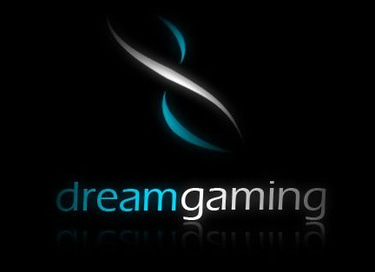Exploring the Gaming Industry: Understanding Departments and Their Roles
GAMING


Ever wonder how your favorite #video #games are made? It's not just one person doing everything. It's a #team effort! Let's take a look at the different teams in the #gaming industry and what they do.
1. Game Developer:
- Roles: These are the people who write the #code that makes the game work. They bring the creative visions of game designers to life through lines of coding.
- Responsibilities: #Developing, debugging, and optimising the game's code to ensure smooth and engaging gameplay experiences.
2. UI/UX Designer:
- Roles: #UI/UX designers focus on crafting the user interface and experience of the game. They design intuitive menus, buttons, and navigation systems that enhance user engagement.
- Responsibilities: Creating visually appealing interfaces, conducting user research, and optimizing user interactions to improve overall #player satisfaction.
3. Animator:
- Roles: #Animators make game #characters and #worlds move and look #cool. They team up with designers to make sure the #animations match how the game should look and feel.
- Responsibilities: Designing and implementing character movements, special effects, and cinematic sequences to enhance immersion and #storytelling.
4. Environment Artist:
- Roles: #Environment #artists are responsible for designing and building the landscapes, scenery, and settings within the game #world. They create immersive #environments that captivate players and enhance gameplay.
- Responsibilities: Conceptualizing, modeling, and texturing 3D environments, props, and structures to create visually stunning game worlds.
5. 2D/3D Designer:
- Roles: 2D/3D designers specialize in creating artwork and assets for the game. They use various software tools to design characters, objects, and environments in both two and three-dimensional space.
- Responsibilities: Conceptualizing and producing artwork, textures, and models that align with the game's visual style and #theme.
6. Quality Assurance (Game Tester):
- Roles: #Quality assurance testers play a vital #role in ensuring the game meets quality standards and is free of bugs and glitches. They rigorously test gameplay #mechanics, graphics, and user interfaces to identify and report issues.
- Responsibilities: Conducting thorough testing, documenting bugs, and providing feedback to developers to improve game performance and user experience.
7. Game Producer:
- Roles: Game #producers oversee the #development process from start to finish, ensuring that projects stay on schedule and within #budget. They coordinate efforts between different departments and #stakeholders to deliver high-quality games.
- Responsibilities: Planning project timelines, managing #resources, and resolving conflicts to ensure timely and #successful game releases.
8. Game Designer (Game Design Documents):
- Roles: Game designers are responsible for conceptualizing and designing the overall gameplay mechanics and systems. They create detailed design documents outlining game features, levels, and objectives.
- Responsibilities: Developing game concepts, designing levels, mechanics, and gameplay loops, and iterating on designs based on player feedback and testing.
9. ASO (App Store Optimization):
- Roles: #ASO specialists focus on optimizing the game's visibility and ranking on app stores. They employ strategies to improve search ability, increase downloads, and attract new players.
- Responsibilities: Conducting keyword research, optimizing metadata, and implementing marketing tactics to enhance the game's discoverability and conversion rate.
10. Marketer:
- Roles: Marketers promote and advertise the game to target #audiences through various channels and platforms. They develop marketing campaigns, create promotional materials, and engage with players to drive awareness and engagement.
- Responsibilities: Crafting marketing strategies, managing advertising campaigns, analyzing market trends, and tracking performance metrics to optimize marketing efforts.
11. Video Editor:
- Roles: Video editors create promotional trailers, gameplay videos, and other video content to showcase the game and attract players. They use editing software to assemble footage, add effects, and enhance visual appeal.
- Responsibilities: Editing and producing high-quality videos, trailers, and promotional content that effectively communicate the game's features and appeal to the target audience.
12. Sound Artist:
- Roles: Sound #artists are responsible for creating and integrating audio elements into the game. They design sound effects, compose music, and implement audio cues that enhance immersion and atmosphere.
- Responsibilities: Recording, editing, and mixing audio assets, composing original music tracks, and implementing sound effects to enhance gameplay and storytelling.
13. Publishers:
- Roles: Publishers oversee the distribution, marketing, and monetization of the game. They provide financial support, handle legal matters, and coordinate with developers to bring the game to market.
- Responsibilities: Funding game development, managing distribution channels, negotiating publishing agreements, and promoting the game to maximize sales and revenue.
14. Human Resources (#HR)
In the gaming industry, the HR department serves as the backbone, overseeing talent acquisition, employee relations, and fostering a positive work culture to support the growth and development of team members.
Gaming industry thrives on the collaborative efforts of various departments, each contributing unique skills and expertise to create immersive and memorable gaming experiences. From developers and designers to marketers and publishers, every #role plays a crucial part in shaping the landscape of interactive #entertainment.
